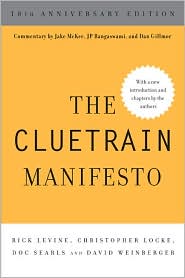October 26, 2015
[liveblog][act-tiac] The nation's front door
Sarah Crane, Dir., Federal Citizen Information Center, GSA., is going to talk about USA.gov. “In a world where everyone can search and has apps, is a web portal relevant?,” she asks.
|
NOTE: Live-blogging. Getting things wrong. Missing points. Omitting key information. Introducing artificial choppiness. Over-emphasizing small matters. Paraphrasing badly. Not running a spellpchecker. Mangling other people’s ideas and words. You are warned, people. |
When the US web portal (first.gov [archival copy]) was launched in 2000, it had an important role in aggregating and centralizing content. Now people arrive through search.
USA.gov is a platform that offers a full suite of bilingual products, built around a single structured API: information, contacts, social media, etc. All is built around a single API. The presentation layer is independent of the content. Thanks to the API, all the different outputs use the same consistent content.
It’s designed to integrate with other agency content. In fact, they don’t want to be writing any of the content; it should come from other agencies. Also, it’s built to so its modules and content can be reused. And it’s built to scale. It can support expansion or consolidation. E.g., if an initiative loses steam, its content can be pulled in and be kept available.
How people use govt services: They look online, they ask their friends, and they expect it to be easy. People are surprised when it’s complex. Some people prefer in-person help.
So, how does the portal remain relevant?
Customer experience is a core tenant. They recently launched a Customer Experience division. Constant measurement of performance. Fixing what doesn’t work. Clear lines of reporting up to the senior management. The lines of reporting also reach all the way to the devs.
Last year they re-did their personas, based on four different behaviors: 1. Someone who knows exactly what s/he’s looking for. 2. Someone has a general idea, but not informed enough to search. 3. Someone wants to complete a transaction. 4. Someone who wants to contact an elected official. They analyzed the experiences, and did “journey maps”: how someone gets to what she wants. These journeys often include travels into other agencies, which they also mapped.
What’s next for them now that info is cheap and easy to find? Sarah likes Mint.com‘s model:
-
Aggregated, personalized content collected from multiple agencies.
-
Pre-emptive service – alert, etc.
-
Relevant updates as you are in the task.
See Blog.USA.gov, and USA.gov/Explore
Q&A
Q: [me] Are people building on top of your API?
A: Some aspects, yes. Heavily used: the A-Z agency index – the only complete listing of every agency and their contact info. There’s a submission to build a machine-readable org chart of the govt that will build on top of our platform. [OMG! That would be incredible! And what is happening to me that I’m excited about a machine-readable org chart?]
Also if you use bit.ly to shorten a gov’t url, it creates one.usa.gov which you can use to track twitter activity, etc.
Certain aspects of the API are being used heavily, primarily the ones that show a larger perspective.
Q: Won’t people find personal notifications from the govt creepy, even though they like it when it’s Mint or Amazon?
A: The band-aid solution is to make it opt-in. Also being transparent about the data, where it’s stored, etc. This can never be mandatory. The UK’s e-verify effort aims at making the top 20 services digital through a single ID. We’d have to study that carefully We’d have to engage with the privacy groups (eg., EPIC) early on.
Q: Suppose it was a hybrid of automated and manual? E.g., I tell the site I’m turning 62 and then it gives me the relevant info, as opposed to it noting from its data that I’m turning 62.
Q: We’re losing some of the personal contact. And who are you leaving behind?
A: Yes, some people want to talk in person. Our agency actually started in 1972 supplying human-staffed kiosks where people could ask questions. Zappos is a model: You can shop fully online, but people call their customer service because it’s so much fun. We’re thinking about prompting people if they want to chat with a live person.
The earliest adopters are likely to be the millennials, and they’re not the ones who need the services generally. But they talk with their parents.
I briefly interviewed Sarah afterwards. Among other things, I learned:
-
The platform was launched in July.
-
The platform software is open source.
-
They are finding awesome benefits to the API approach as an internal architecture: consistent and efficiently-created content deployed across multiple sites and devices; freedom to innovate at both the front and back end; a far more resilient system that will allow them to swap in a new CMS with barely a hiccup.
-
I mentioned NPR’s experience with moving to an API architecture, and she jumped in with COPE (create once, publish everywhere) and has been talking with Dan Jacobson, among others. (I wrote about that here.)
-
She’s certainly aware of the “government as platform” approach, but says that that phrase and model is more directly influential over at 18F
-
Sarah is awesome. The people in government service these days!









